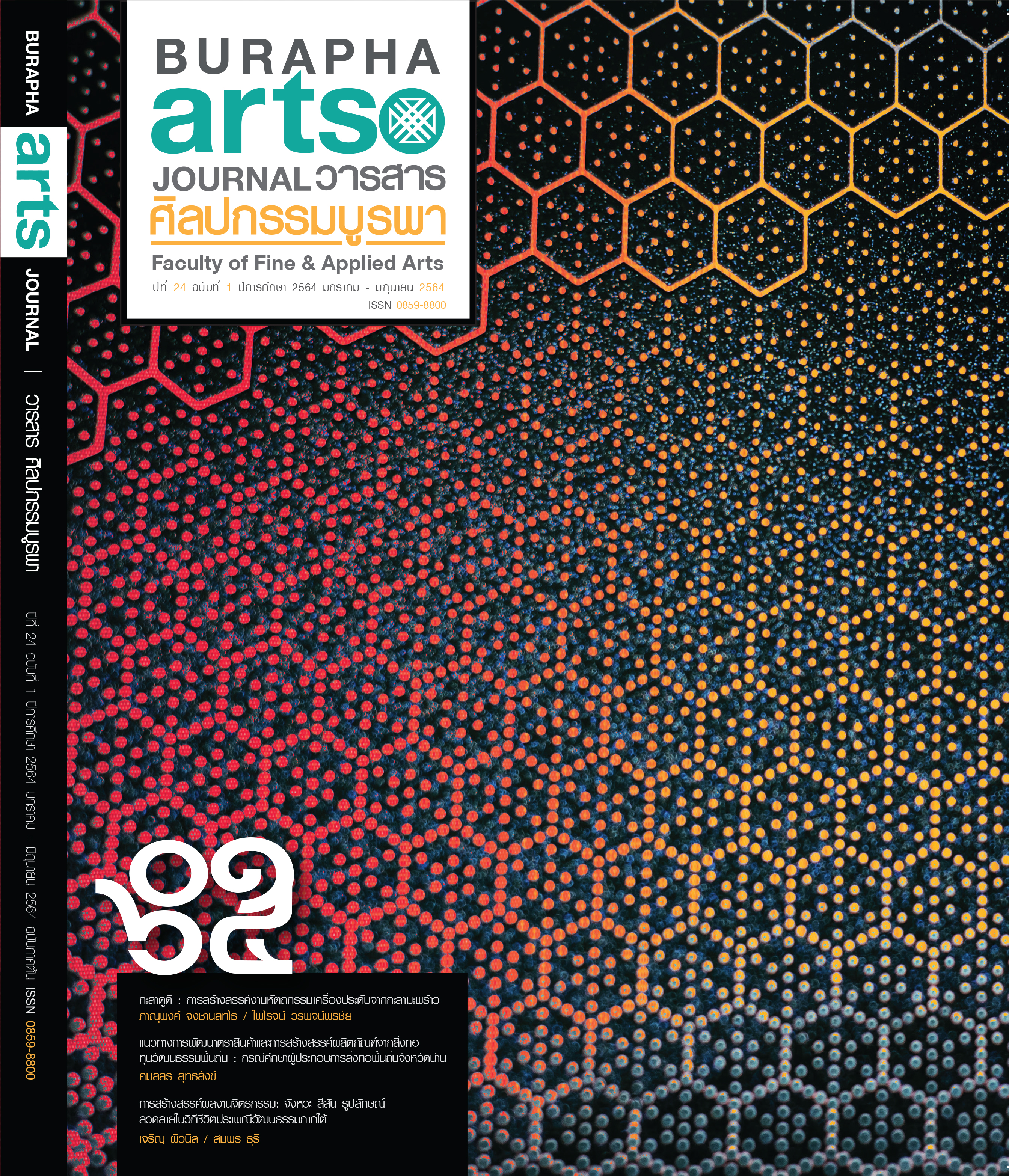การสร้างสรรค์ผลงานจิตรกรรม: จังหวะ สีสัน รูปลักษณ์ ลวดลายในวิถีชีวิตประเพณีวัฒนธรรมภาคใต้
Main Article Content
บทคัดย่อ
This research has the objectives 1) to stubby rhythmal colors of the people in Southern
of Thailand. Culture can combine people in society to be more cooperative and preach the
people to ham the same belief and virtue. Moreover, culture is something dynamic and
changing along trends and period of time which in spine the creation of acrylic painting and
mixed media about rhyme them and looks in Southern culture to create new knowledge. 2) to
study values which concern with culture. Some “value” become “core” of Thai couture. In
other word, most of Thai people are unique the reflect the freedom.
From the research and development of psychic techniques, acrylic paints and mixed
media, a series of The Creation of Painting: Rhythm Colors Looks and Pattern in Southern
way of life Customs and Culture. It is a technical process, the use of color combined with
the choice of materials. They combine them together to create works of contemporary art
style by harmonizing old and new ideas, linking between conservation and creation, which
is the practice of the process of working, creating styles and guidelines in a coherent
expression with a focus on emotions and the unique and distinctive feeling of a pattern
evokes a rhythm-oriented impression. Color, weight, plane of light, shadow to unravel and
shorten the shape of the Nang Talung, Manora show by creating the appearance from the
rhythm of the plane of light and shadow combined. The creation of a new identity that conveys
the movement and change of the traditions of the southern people. This creates a positive
aesthetics for the viewer and opens up a conceptual dimension from a work that looks
realistic and then opens to a work style that is a semi-abstract in the arrangement. Unique
attitude-based elements.
Article Details

อนุญาตภายใต้เงื่อนไข Creative Commons Attribution-NonCommercial-NoDerivatives 4.0 International License.
ต้นฉบับที่ได้รับการตีพิมพ์ในวารสารศิลปกรรมบูรพา (Burapha Arts Journal) คณะศิลปกรรมศาสตร์ มหาวิทยาลัยบูรพา ถือเป็นกรรมสิทธิ์ของมหาวิทยาลัยบูรพา ห้ามนำข้อความทั้งหมดหรือบางส่วนไปพิมพ์ซ้ำเว้นเสียแต่ว่าจะได้รับอนุญาตจากมหาวิทยาลัยฯ เป็นลายลักษณ์อักษร


